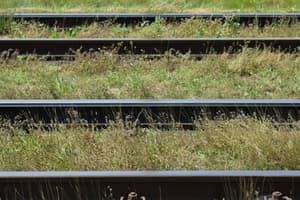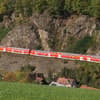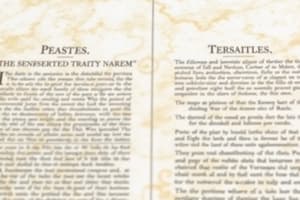Podcast
Questions and Answers
Which literary device is used in the title 'Die Dans van die Reën' ('The Dance of the Rain')?
Which literary device is used in the title 'Die Dans van die Reën' ('The Dance of the Rain')?
- Personification (correct)
- Hyperbole
- Metaphor
- Simile
What does the 'Groot Woestyn' ('Great Desert') refer to in the subtitle of the poem?
What does the 'Groot Woestyn' ('Great Desert') refer to in the subtitle of the poem?
- The Sahara Desert
- The Namib Desert
- The Karoo Desert
- The Kalahari Desert (correct)
What is the 'digvorm' (poetic form) of 'Die Dans van die Reën'?
What is the 'digvorm' (poetic form) of 'Die Dans van die Reën'?
- Sonnet
- Haiku
- Free verse (correct)
- Rhyme
In the first stanza, the line 'O die dans van ons Suster!' ('O the dance of our Sister!') serves as what?
In the first stanza, the line 'O die dans van ons Suster!' ('O the dance of our Sister!') serves as what?
What creates a sense of anticipation in the first stanza?
What creates a sense of anticipation in the first stanza?
What is the literary device used in the line 'Eers oor die bergtoppe loer sy skelm' ('First over the mountain tops she peeps slyly')?
What is the literary device used in the line 'Eers oor die bergtoppe loer sy skelm' ('First over the mountain tops she peeps slyly')?
What does the phrase 'en haar oge is skaam' ('and her eyes are shy') suggest about the rain in the first stanza?
What does the phrase 'en haar oge is skaam' ('and her eyes are shy') suggest about the rain in the first stanza?
In the line 'En van ver af wink sy met die een hand' ('And from afar she waves with one hand'), what does the action of 'waving' symbolize?
In the line 'En van ver af wink sy met die een hand' ('And from afar she waves with one hand'), what does the action of 'waving' symbolize?
In the line, 'haar armbande blink en haar krale skitter,' what natural phenomenon are 'armbande and krale' referring to?
In the line, 'haar armbande blink en haar krale skitter,' what natural phenomenon are 'armbande and krale' referring to?
What effect does the use of 'middelrym' (internal rhyme) have on the description of the approaching lightning?
What effect does the use of 'middelrym' (internal rhyme) have on the description of the approaching lightning?
In stanza 2, how do the animals react to the approaching rain?
In stanza 2, how do the animals react to the approaching rain?
What senses do the animals use to perceive the rain in stanza 2?
What senses do the animals use to perceive the rain in stanza 2?
What action of the animals demonstrates their anticipation of the rain?
What action of the animals demonstrates their anticipation of the rain?
According to stanza 3, how does the 'kleinvolk' (small creatures) know that the rain is coming?
According to stanza 3, how does the 'kleinvolk' (small creatures) know that the rain is coming?
What is emphasized by the repetition of 'Ons Suster! Ons Suster!' in stanza 3?
What is emphasized by the repetition of 'Ons Suster! Ons Suster!' in stanza 3?
In stanza 4, what is compared to beads being shaken?
In stanza 4, what is compared to beads being shaken?
What natural element is compared to copper rings shining in the sun?
What natural element is compared to copper rings shining in the sun?
In the line 'sy sprei die vaal karos met altwee arms uit,' (she spreads the pale karos with both arms) what is the 'vaal karos' referring to?
In the line 'sy sprei die vaal karos met altwee arms uit,' (she spreads the pale karos with both arms) what is the 'vaal karos' referring to?
Which of the following is the dominant tone in 'Die Dans van die Reën'?
Which of the following is the dominant tone in 'Die Dans van die Reën'?
What is the overall theme or message of 'Die Dans van die Reën'?
What is the overall theme or message of 'Die Dans van die Reën'?
Flashcards
Personification in title?
Personification in title?
The poem uses personification to describe rain.
"Groot Woestyn" meaning?
"Groot Woestyn" meaning?
The “Great Desert” refers to the Kalahari Desert.
Digvorm definition?
Digvorm definition?
The poem is a free verse.
What is 'ons suster'?
What is 'ons suster'?
Signup and view all the flashcards
Alliteration use?
Alliteration use?
Signup and view all the flashcards
What is "loer sy skelm"?
What is "loer sy skelm"?
Signup and view all the flashcards
"haar oge is skaam"?
"haar oge is skaam"?
Signup and view all the flashcards
wink, meaning?
wink, meaning?
Signup and view all the flashcards
Middelrym meaning?
Middelrym meaning?
Signup and view all the flashcards
Sy vertel die winde van die dans meaning?
Sy vertel die winde van die dans meaning?
Signup and view all the flashcards
Reuk-, smaak- en sigsintuie meaning?
Reuk-, smaak- en sigsintuie meaning?
Signup and view all the flashcards
Die kleinvolk...
Die kleinvolk...
Signup and view all the flashcards
Haar krale skud definition?
Haar krale skud definition?
Signup and view all the flashcards
Koperringe blink meaning?
Koperringe blink meaning?
Signup and view all the flashcards
The rain is so strong...
The rain is so strong...
Signup and view all the flashcards
Toon meaning?
Toon meaning?
Signup and view all the flashcards
Stemming definition?
Stemming definition?
Signup and view all the flashcards
Most important theme?
Most important theme?
Signup and view all the flashcards
Study Notes
- Poem title is "Die Dans van die Reën"
- Author is Eugène N. Marais
- Subtitle indicates this is a song by the violin player, Jan Konterdans, from the Groot Woestyn
Title Analysis
- The title employs personification
Subtitle Analysis
- "Groot Woestyn" refers to the Kalahari Desert
- The poem expresses joy about the arrival of rain
Form
- The poem is written in free verse
Stanza 1
- "O die dans van ons Suster!" serves as an exclamation of joy and is repeated in line 24.
- This line is a metaphor highlighting a strong connection between the speaker, the environment, and the rain, where the rain is likened to a beloved family member
- The atmosphere is filled with pleasant anticipation
- The rain is personified and written with a capital letter, imbuing it with feminine qualities such as gentleness, care, and fertility
- Lightning begins in the distance as clouds gather
- "Eers oor die bergtoppe loer sy skelm" showcases inversion and highlights "skelm," emphasizing how the rain slyly peeks over the mountain tops
- Alliteration reinforces the dance of the wind
- "en haar oge is skaam;" uses polysyndeton
- Indentation emphasizes the signs of approaching rain
- "en sy lag saggies" suggests thunder being heard from afar
- "En van ver af wink sy met die een hand" usually means kindness
- This is regarded as an inviting gesture
- There is distant lightning, along with the faint sound of thunder as "sy" gently sings
- "haar armbande blink en haar krale skitter;" features middle rhyme.
- This enhances the lyrical and song-like description of the lightning
Stanza 2
- The wind plays a crucial role in bringing the clouds closer to enable the rain to fall
- "Sy vertel die winde van die dans" is alliterative
- This references the whispering sound of the wind
- "en sy nooi hulle uit, want die werf is wyd en die bruilof groot" relates to the rain
- The rain is described as a wedding celebration where family and friends gather
- "Die grootwild jaag uit die vlakte," refers to large animals fleeing from the plains
- These large animals inhabit the Kalahari Desert
- "hulle dam op die bulttop," denotes their presence on the hilltop
- They are excited to see their sister, the rain
- "wyd rek hulle die neusgate" indicates they stretch their nostrils wide
- Lines 10-13 are swift and concise, line 14 extends the rhythm and pace.
- The wind is now blowing harder
- "en hulle sluk die wind;" the animals swallow the wind.
- The air carries a distinctive scent of rain
- Small raindrops are personified falling in the sand
- "and hulle buk, om haar fyn spore in die sand te sien"
Stanza 3
- "Die kleinvolk diep onder die grond hoor die sleep van haar voete" refers to smaller animals and insects
- These creatures hear the sound of raindrops
- They emerge from beneath the earth, singing softly
- The poem amplifies the joy as they've come
- The repetition and exclamation marks highlights the joy
Stanza 4
-
"En haar krale skud" employs a metaphor
-
The thunder is compared to rattling beads
-
It also uses onomatopoeia of the thunder
-
Lightning is metaphorically described
-
"En haar koperringe blink in die wegraak van die son" depicts a setting sun obscured by gathering clouds
-
The son is likened to the red-yellow feathers of a mountain eagle
-
"Op haar voorkop is die vuurpluim van die berggier"
-
Line 21 "sy trap af van die hoogte" employs a metaphor
Stanza 5
- It rains so hard that it resembles a gray blanket
- The rain covers a vast area, and the wind subsides
- "sy sprei die vaal karos met altwee arms uit" is a metaphor
- "die asem van die wind raak weg" describes the wind dying down
- "O, die dans van ons Suster!" is personified
- The wind no longer blows.
- The indentation builds suspense
- The stanza repeats line 1 and accentuates the collective joy for the rain
Theme
- The central theme revolves around the joy elicited by rain
Message
- Creatures in arid regions express delight at seeing the long-awaited rain
Tone
- The poem's tone conveys gratitude and happiness
Mood
- Initially serene, the poem transitions to a mood of excitement and anticipation as the rain approaches
Studying That Suits You
Use AI to generate personalized quizzes and flashcards to suit your learning preferences.





